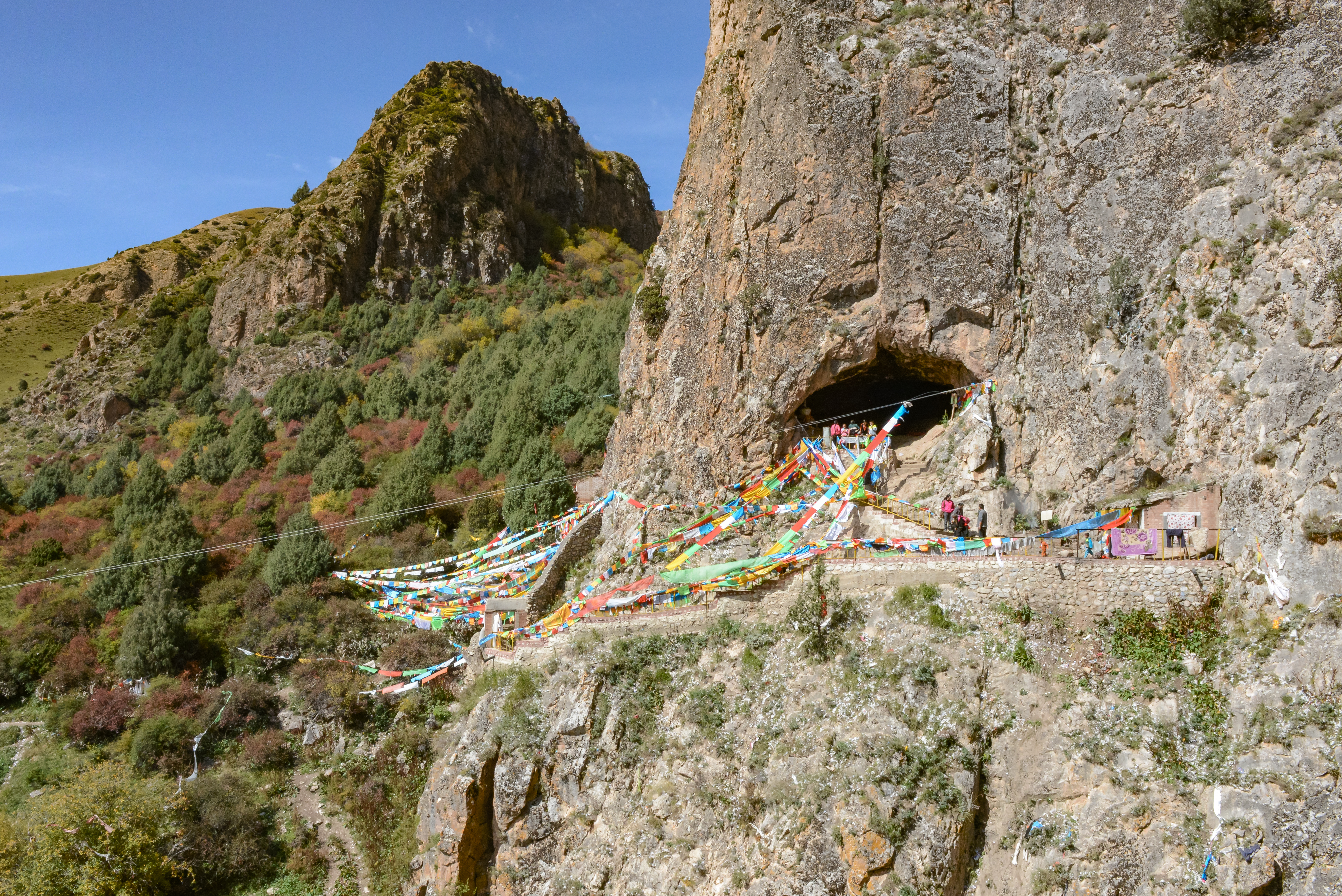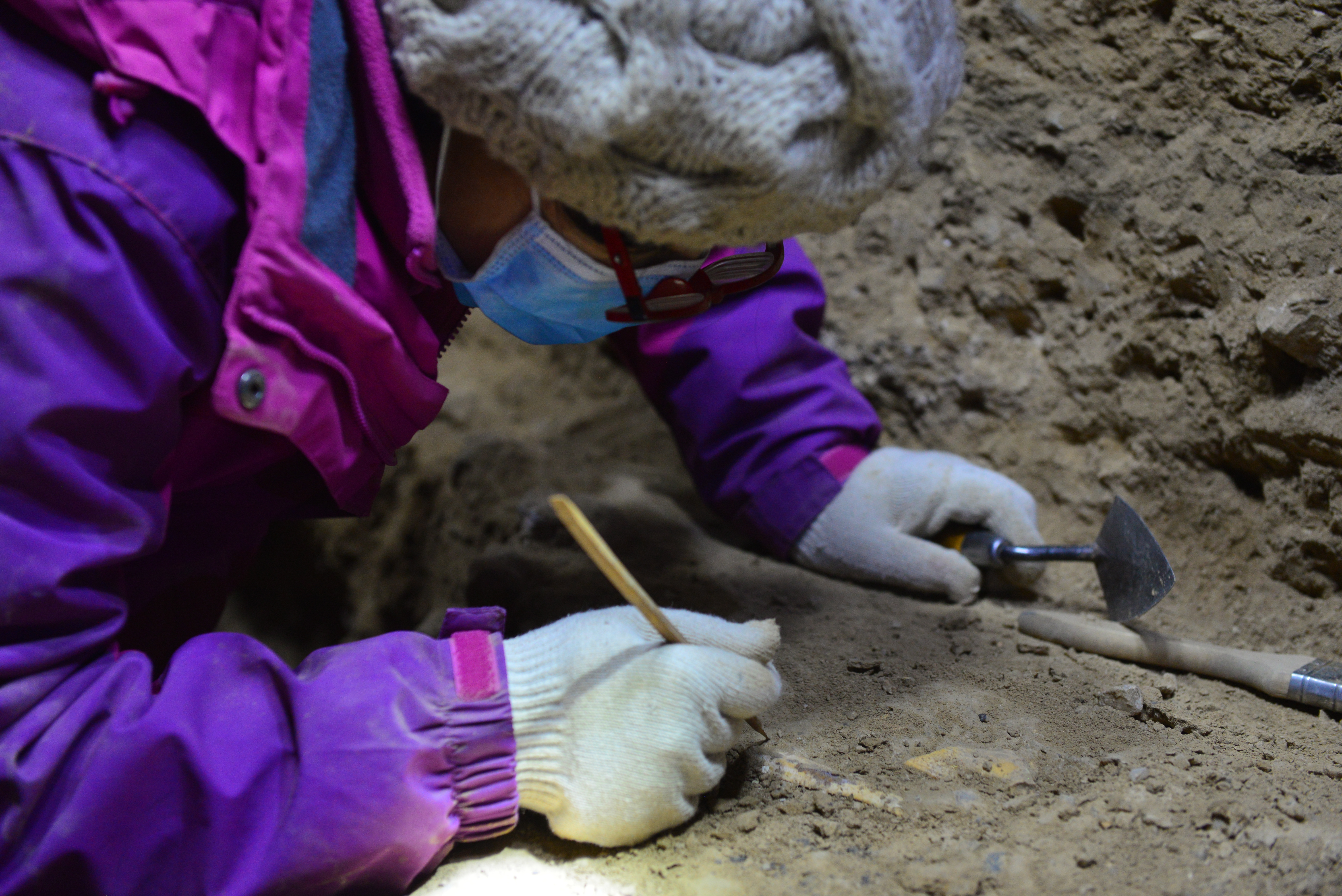Nestled within the Tibetan plateau, Baishiya Karst Cave offers a unique glimpse into the Denisovans, a mysterious branch of ancient hominins. Recent discoveries suggest these early humans adapted to the region’s harsh conditions some 40,000 years ago, hunting local wildlife and potentially interacting with early modern humans. Through cutting-edge protein analysis, researchers have traced Denisovan DNA, providing insights into their survival and their genetic impact on modern Tibetans, especially regarding altitude adaptation.
High in the Tibetan plateau, where colourful Buddhist prayer flags wave in the thin air, a cave holds clues to what life was like for a little-known human relative – the Denisovans.
Tibetan Buddhists have been visiting Baishiya Karst Cave for centuries as a pilgrimage to honour the guru Padmasambhava and the bodhisattva Tara, but their distant relatives may have called it home for millennia. In 1980, a monk meditating in the cave spotted what appeared to be a human jawbone with massive molars peeking out from the floor. In 2019, researchers used proteomic analysis to identify the mandible as being distinctly non-modern human – it belonged to a Denisovan, an elusive line of ancient hominins closely related to the Neanderthals.
A new study published in July in Nature sheds light on how the Denisovans of Baishiya Karst Cave eked out a living in the unforgiving environment of the Tibetan Plateau during the Palaeolithic Age. And an unexpected finding – thanks to advanced protein analysis techniques – could potentially explain how traces of Denisovan DNA persist in certain modern communities, including ethnic Tibetans.

A portal to the past
Baishiya Karst Cave sits an impressive 3,280 metres above sea level, perched above a ravine where a glacier-fed stream flowed during the last glacial–interglacial cycle. Its 9-metre-tall entrance is like a portal into a narrow cave that stretches at least a kilometre into the mountainside, says Frido Welker, a molecular palaeoanthropologist at the University of Copenhagen in Denmark and co-author.
The cave would have been a refuge for ancient hominins. Inside the cave, the average daytime temperature in the winter is about 8°C, downright balmy compared with the temperatures the hominins would have faced during the last two ice ages.
For the past decade, Dongju Zhang, an environmental archaeologist at Lanzhou University in China and co-author, has studied the people of the Palaeolithic Age in what is now the Tibetan Plateau – “when they lived there, how they used the environment and how they adapted to the environment.”
In 2018 and 2019, Zhang and colleagues undertook a series of excavations at Baishiya Karst Cave to uncover more details of the lives of the Denisovans. They chose a section of the cave about 20 metres in – deep enough to be well protected from the elements but close enough to the cave’s entrance that light still reaches – for focused study.
The researchers excavated two small trenches, each one metre by two metres and meticulously catalogued the items and remains embedded in the sediments. In the upper 11 layers, they ultimately found more than 2,500 bone fragments – but fewer than 700 were large enough to be identified based on their anatomy, Zhang explains.
To study the rest, the researchers turned to protein analysis. Ancient DNA is notoriously hard to recover, but archaeologists have had greater success pulling ancient proteins from bones, especially collagen, Welker explains. By sacrificing a tiny piece of each bone fragment, the researchers could compare the collagen in the bone samples with a vast library of proteins from modern species and other ancient specimens. That enables the animal species to which the bone fragment belonged to be determined.

What’s on the Palaeolithic menu?
The protein analysis revealed a distant favourite from the bone fragments – Denisovans clearly liked their caprines.
Caprines, a family of goat-like creatures, account for 60% of the bone fragments found in Baishiya Karst Cave. Many of those were a match for the bharal, or blue sheep, which still roam the Tibetan Plateau.
But the Denisovans used other creatures too – rabbits, birds, marmots, flying squirrels and porcupine all appear on their protein censusmenus. Other bone fragments indicate that the Denisovans tangled with and defeated predators, including foxes, wolves and even snow leopards.
Although many of these animals would be familiar to modern Tibetans, others are more outlandish – including hyenas and the woolly rhinoceros, a massive horned beast that tipped the scales at as much as two tonnes.
“All this gives us the impression that, in this basin, when the Denisovans occupied the site, the animal resources were rich and they used all the animals available to them,” Zhang says.
The Denisovans were certainly hunting – but were they gathering? Scientists tend to have more evidence on the meat-eating habits of ancient hominids since bones survive better in the archaeological record, whereas plants tend not to make it through tens of millennia. Nevertheless, Zhang says that the evidence of plant consumption is even sparser at Baishiya Karst Cave than in comparable Palaeolithic sites. “We know that people who have lived on the Tibetan Plateau for many generations eat a lot of meat” proportionally, Zhang explains.
But like their modern neighbours, the Denisovans must have gotten their greens in somehow. So far, the researchers have only uncovered some seeds in Baishiya Karst Cave, but Zhang hopes that residue analysis on stone tools recovered from the site could offer more clues.
The site of an ancient meet-cute?
The most exciting find only came to light thanks to the protein analysis, Zhang says. One small bone fragment in the heaps of animal remains that might otherwise have gone unnoticed turned out to be a piece of a Denisovan’s rib.
Vanishingly few Denisovan specimens are known to science – a fragment of a young Denisovan girl’s pinkie bone, a baby tooth and a handful of fragments found in Siberia’s Denisova Cave were all researchers had to work with until the mandible was discovered in Baishiya Karst Cave.
The jawbone dates to at least 160,000 years ago, but the rib fragment is a youthful 40,000 years old based on the layer of sediment in which it was found, Zhang estimates. That could shift the timeline of Denisovan survival, since researchers are not certain when the Denisovans died out.
The fact that the Denisovans in Baishiya Karst Cave survived “so late” has interesting implications. “Forty thousand years ago is a critical time,” Zhang explains, coinciding with “the appearance of the original modern humans in eastern Asia.”
This suggests that Denisovans might have mingled with modern humans on the Tibetan Plateau. “Did they have communication or competition with modern humans on the Tibetan Plateau?” Zhang asks. Genetic evidence related to today’s ethnic Tibetans certainly indicates that the two species became well acquainted at some point. Tibetans and other Himalyan human populations carry a gene that helps them thrive in high altitudes and thin air, which also appeared in Denisovans, who apparently had tens of millennia to adapt before modern humans arrived on the scene.
“Understanding how the Denisovans contribute genetically to modern humans is very important,” Zhang says.
